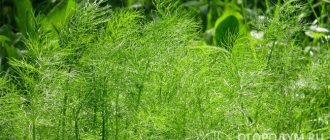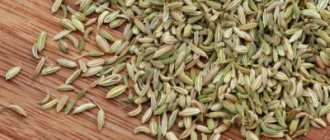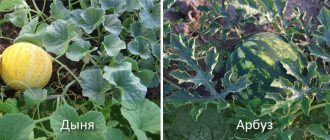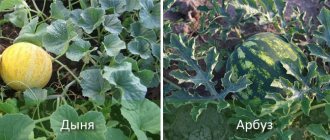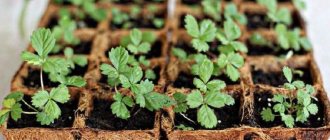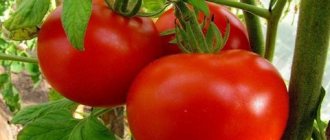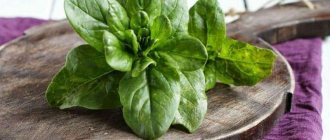Features of growing watermelons in open ground
When growing watermelons in open ground, the main factor is the environmental temperature, the duration of summer and the number of sunny days per year. If you plant a variety with a long growing season in a region with a short summer, it simply will not have time to ripen before the onset of cold weather.
What to look for when choosing a variety?
Once upon a time, watermelons grew only in the warmest regions of the Russian Empire; today this crop conquers not only the Moscow region, but also Siberia and the Urals. For each region and climate, its own best varieties of watermelons have been bred and zoned.
When choosing a variety, consider:
- frost resistance of the variety and climate in the region;
- requirements for soil and other growing conditions;
- ripening time.
Regionality and climate
Varieties with a long growing season are suitable only for the southern regions. In cooler areas, only early-ripening varieties can be grown, with a growing season of 70-90 days.
To make it easier for gardeners and large farmers to choose watermelons suitable for growing in their region, all varieties were divided into several groups. Groups of varieties according to geographical characteristics:
- Russian;
- Western European;
- Little, Central and East Asian;
- Transcaucasian;
- Far Eastern;
- American;
- Indian;
- Afghan.
Watermelons of the Russian, less often Central Asian or Transcaucasian group are suitable for middle latitudes. These varieties are characterized by increased environmental stability, allowing them to maintain productivity in stressful situations.
Our melon growers often plant imported hybrids - they are usually beautiful, tasty, productive, hardy, and highly marketable. The disadvantage of imported hybrids is their high care requirements, so amateurs should not bother with their cultivation.
Features of growing in different climatic zones:
- Transbaikalia. Here, early ripening varieties are grown in seedlings. Seedlings are grown in peat cups. Planting is carried out around the end of May - they wait until the soil warms up. Seedlings should have 3-4 leaves. Growing features: seedlings are hardened for 7 days at a temperature of +15–17 °C;
- watermelons are grown in high beds;
- The beds are covered with film stretched over arcs.
- Watermelons are planted as seedlings. If seeds are sown in the ground, the soil is mulched and covered with film.
The presented video tells from A to Z about growing watermelons in open ground:
Recommended varieties of watermelons for different regions:
| Region | Recommended varieties | Note |
| Central regions and the Urals | Sibiryak, Skorik, Ogonyok | Early varieties with a small mass of fruits |
| Far East | Ogonyok, Early Kuban, Skorik | Early and mid-season varieties |
| Bashkiria | Sorento F1, Crimson Sweet, Earthman, Top Gun F1 | Early and mid-ripening varieties with a short growing season. Weight – 4-6 kg. |
| Southern regions | Ataman F1, Kholodov's Gift, Astrakhansky, Volzhanin, Spring Bush 334, Chill, Black Prince, Delight, Jubilee | Varieties with different ripening periods and low frost resistance. They are distinguished by their large size and sweetness. |
| Transbaikalia | Ogonyok, Sugar baby, Ultra early ripening watermelon. | Small varieties, the weight of watermelons is 1.5-2 kg. |
| All regions | Skorik, Sugar Baby, Honey Giant, Ogonyok, Prince Albert F1, Sugar Baby, Williams F1, Gift of the Sun | These are universal varieties that are suitable for growing in any region. |
Seed quality
After a variety is selected, seeds are purchased. If they turn out to be non-germinating, infected with any diseases, or defective, then there may be no harvest at all.
Tips for seed selection:
- Buy seeds collected 2-3 years ago. Freshly harvested seeds will produce plants with male flowers, while fruits will appear from female flowers.
- Test the seeds for germination. Place 5 g of table salt in 100 ml of water. Place the seeds in the saline solution. Wait a few minutes. Throw away the floating seeds - they are unusable. Rinse and dry those that remain at the bottom thoroughly.
Seedling quality
To get good, high-quality seedlings, they are grown in certain conditions, fertilized and hardened. The procedure for growing watermelon seedlings:
- The optimal temperature for seed germination is about 30 °C. Under such temperature conditions, seeds germinate on the 6th day.
- As soon as the seeds germinate, the temperature is immediately lowered to 18 °C.
- The seedlings are given two days to adapt, then the weak seedlings are removed from the containers, leaving the strongest ones.
- Raise the temperature to 20-25 °C. At night it is reduced to 18-20 °C. In this mode, seedlings are grown for about three weeks.
- The seedlings are provided with high-quality lighting so that they do not stretch. At night, special lamps are used. The room is regularly ventilated, avoiding drafts.
- After 10-12 days, the seedlings are fed with a solution of fermented mullein (1:10). After 14 days - the second feeding. The seedlings are again watered with mullein solution, but this time superphosphate (50 g), potassium sulfate (30 g), and ammonium sulfate (15 g) are added for each liter.
- A week before planting in the ground, the seedlings are hardened off. Watering is reduced. The seedlings spend their last days in an outdoor greenhouse. Before planting, seedlings are sprayed with 1% Bordeaux mixture.
The best varieties of watermelons with characteristics
In watermelons, melon growers value the combination of all the qualities on which the profitability of their cultivation depends:
- productivity;
- fruit size and taste;
- marketability;
- keeping quality;
- endurance - frost resistance, drought resistance, immunity to disease;
- demands on growing conditions and other factors.
Those varieties that perform well in Kuban may produce unsightly fruits in the Moscow region or may not ripen at all. Therefore, the decisive factor when choosing a variety for cultivation is zoning.
Varieties of watermelons popular in Russia:
| Variety | Description |
| Gift to the North | Ripens in 75-85 days. The fruits weigh 10-11 kg. The yield is average, but stable. The pulp is juicy and crispy, sweet. It has high immunity, is well stored and transported. |
| Skorik | Ripens in 62-87 days. Weight – 2-4 kg. The pulp is sweet, with a honey flavor. |
| Sugar Baby | The growing season is 75-80 days. Average weight – 4-6 kg. Sweet, with good taste. |
| Pink champagne | Vegetation period – 80-90 days. Average weight – 5-7 kg. The pulp is juicy, with a honey flavor. The variety is unpretentious and tolerates dampness well. |
| Ogonyok | Ripening – 70-80 days. The fruits are small - up to 5 kg. Thin crust. The pulp is grainy. Resists well against low temperatures. |
| Libya F1 | Ripens in 65 days. Weight – 10 kg. The shape is slightly elongated. The pulp is red, very sweet. Very productive, well stored, and marketable. |
| Chill | Medium late variety, ripens in 85-95 days. The fruits are small, up to 5 kg. The skin is strong and the flesh is sweet and juicy. High keeping quality. |
| Turbo F1 | Ultra early hybrid. Ripens in 55 days. Weight – 9-15 kg. Very tasty pulp. |
| Catherine F1 | Vegetation period – 60 days. Average weight – 7-8 kg. The hybrid is valued for its sugar content and tenderness of the pulp. |
| Ataman F1 | The growing season is 70-85 days. The fruits are ellipsoidal, the pulp has a rich sweet taste. Weight – 3-16 kg. |
Formation of beds
The bed for watermelons must be prepared in the autumn; it is well dug and loosened. Before you start digging, increase soil fertility:
- 4-5 buckets of rotted manure or humus are placed on top;
- add 3 tablespoons of superphosphate, potassium salt, ammonium sulfate per 1 m2;
- they spill the soil with a solution of Fitosporin for the population to benefit from beneficial microorganisms;
- In the spring, a week before planting watermelon seedlings, you should loosen the soil.
It is necessary to add two buckets of sand per 1 m2 to clay soil; when digging, it is necessary to remove all roots, debris and weeds.
Preparing seeds for sowing
Seeds that are pre-selected and tested for germination are prepared for planting. To get strong and healthy seedlings, it is recommended to prepare the seeds before planting.
Preparatory activities:
- Disinfection. This procedure is aimed at preventing disease. The seeds are immersed in potassium permanganate (concentration 0.5–1%) for half an hour. Then dry it by spreading it on a cloth napkin.
- Warming up. The seeds are kept for half an hour in water heated to 45 °C. After this procedure, the seeds germinate better. The main thing is not to overheat them. The second option is to warm the seeds in the sun for a week. The heated seeds are immersed in Cytovit or Zircon (2 liters - 1 ampoule).
- Scarification. The essence of the procedure is piercing the seed shell. Germination accelerates significantly. The procedures are carried out 2-3 weeks before sowing.
- Soaking in nutrient solution. To increase yield, seeds are soaked in a solution of microelements. The solution contains manganese, boron, molybdenum. The concentration of the solution is 0.05. Exposure time – 16 hours.
- Germination. To make the seeds germinate faster, they are germinated by wrapping them in a wet cloth. Ambient temperature - +20–25 °C. The fabric is regularly moistened - it should not dry out. During the day, the top layer is removed several times for ventilation. As soon as the sprouts appear, sowing work begins.
Phosphate
In addition to nitrogen, watermelons should also receive phosphorus to improve flowering, budding and strengthen the ovaries. Phosphorus is included in the following fertilizers.
Ammophos
It is produced in the form of light gray granules, which contain 12% nitrogen and 52% phosphorus (many people confuse it with ammophoska, but this is another fertilizer, which in addition to nitrogen and phosphorus contains sulfur and potassium). When using this fertilizer, resistance to diseases increases, increases yield and improves the taste of fruits.
Superphosphate
This fertilizer is very convenient to use, as it is water-soluble, in addition, it contains magnesium, boron, molybdenum, and phosphorus content up to 50%. It is produced in simple, double, granular and ammoniated form.
Site selection and soil preparation
The size and taste of future watermelons depends on the quality of the soil - its structure and fertility. This crop is very sensitive to growing conditions, so preparation for planting begins with choosing a suitable site and fertilizing it.
Features of site selection:
- The soil . Watermelons grow best on light, loose and fertile soils. The fruits grown on virgin sandy loam chernozems are especially good. Sandy and sandy loam soils enriched with humus are suitable. Clay soils are less preferred.
- Predecessors. Watermelons grow well after onions, tomatoes, rye and winter wheat, root vegetables, cruciferous vegetables, and oat-pea mixture. It is not advisable to grow watermelons after the watermelons themselves.
- Growing conditions. Good lighting and protection from winds.
Soil preparation:
- Early in the fall, dig up the soil and add rotted manure.
- Spring pre-sowing harrowing - in March-April, prevents moisture evaporation. Also, when growing watermelons on a mass scale, three times deep loosening and shallow “balling” are carried out.
- Application of mineral fertilizers. For 1 sq. m contribute:
- urea or ammonium nitrate – 30 g;
- superphosphate – 30 g;
- potash fertilizers – 20 g.
- Correcting soil acidity. In acidic soils (pH below 6) there is an excess of iron, manganese and aluminum. Plants are stunted and die due to soil toxicity. In saline soils (pH above 7.5) there is a lack of boron, iron, manganese, phosphorus, zinc, and copper. The fruits crack and rot. Helpful Tricks to Improve Soil pH:
- adding chalk, crushed egg shells or ash (at least 0.5 kg of ash is added per 1 sq. m);
- selection of good predecessors;
- growing green manure;
- fertilizing the soil with manure in the fall (in the spring the manure attracts mole crickets).
Excess fertilizers when growing watermelons negatively affects the quality of the product - the greens grow actively, and nitrates are concentrated in the fruit pulp.
Principles of crop rotation
To grow sweet and large watermelons, it is necessary to strictly observe crop rotation when planting them. A watermelon can be grown in one place for no more than two years, and then watermelons cannot be grown in that place for seven years. It is not recommended to plant watermelons in the place where legumes, nightshades, pumpkin crops and cabbage grew.
Tomatoes, onions, garlic, and rye will be good neighbors; green manure can be planted in a bed prepared in the fall for watermelons, and then cut off in the spring, which will provide good soil aeration.
Planting: step-by-step instructions
In the southern regions of Russia and in the Black Earth Region, watermelons can be grown by sowing seeds in the ground. In other regions, the crop is planted as seedlings - in open ground or in greenhouses. Let's consider both landing methods.
Planting watermelons with seeds in open ground:
- Plant seeds when the soil warms to 12-15 °C.
- Prepare rows for planting seeds. Plant seeds at intervals of 70-150 cm - the bushes need plenty of space to grow. For particularly spreading varieties, intervals of about 2 m are required. The row spacing is 1.5 m.
- Prepare holes for planting. The depth of planting seeds in loose and light soils is 4-8 cm, in dense and heavy soils - 4-6 cm. The diameter of the hole is 1 m, the depth is 30 cm. Do not put fresh manure in the hole - it provokes diseases and worsens the taste of watermelons. Add into the hole:
- compost or humus – 1 kg;
- ash – 1 tbsp. l.;
- nitroammophosphate – 1 tsp;
- if the soil is heavy, add sand.
- Fill the hole with 2 liters of water. When it is absorbed, plant the seeds.
- Place 4-5 seeds in the prepared hole, deepening them 3-6 cm. Cover them with soil and compact them. There is no need to water the hole. To prevent a crust from forming, the surface is sprinkled with humus.
- When sprouts appear, the seedlings are thinned out. Leave the strongest plants. The procedure is repeated in the phase of 3-4 leaves. After thinning, 1-2 plants remain in the hole.
Watermelons grown by direct seeding in the ground are more resistant to stressful situations, but the crop ripens later than when planted from seedlings.
In regions with short summers, planting seedlings is the only way to grow watermelons. Seeds are sown a month before planting in the ground. If stable warmth is established, for example, at the end of May, then the seeds for seedlings are sown at the end of April.
The order of planting seedlings:
- Replant seedlings that are hardened and prepared according to all the rules at a daytime temperature of +15-20 °C. The night temperature should not fall below +8 °C.
- Dig holes for transplanting seedlings. The minimum distance between adjacent holes is 50 cm. The optimal layout is 100 x 70 cm. The size of the holes should be slightly larger than that of pots with seedlings.
- Pour 1/2 cup of ash into each hole. Mix the ash with the soil and water the hole.
- Water the seedlings to make it easier to remove them from the pots.
- Remove the roots of the seedling along with the soil. Carefully move the lump of earth into the hole and deepen it a little.
- Water the transplanted seedling at the root. The water should be a little warm. Sprinkle a little sand around the holes in a 1 cm layer.
Watering after fertilizing
Watermelons must be watered according to weather conditions:
- in cloudy weather after 5 days;
- in drought every day;
- in warm weather after 2 days;
- When it rains, watering is not carried out.
If the plants are blooming, then the watering rate is increased from 5 liters per bush to ten, soaking the soil to a depth of up to 80 cm. During the flowering and budding period, watermelons are watered strictly at the root, without getting on the flowers, leaves and buds.
As soon as the fruits begin to develop, water abundantly, but once every 7 days. 14 days before harvesting, watering is stopped completely, otherwise the berries will become watery and tasteless.
Watermelon care process
If you do not provide watermelons with proper care, then even the highest quality seedlings planted on fertile soils will not produce a crop. Watermelons require a whole range of caring measures - they must be regularly weeded, watered, fed, protected from diseases and pests.
Irrigation scheme
Watermelons are juicy fruits; it is not surprising that this crop loves moisture. But they do not need abundant and frequent watering. Overwatering can lead to the development of diseases.
Features of watering watermelons:
- At first, seedlings or seedlings are watered about once a week. The soil should be moistened by 25-30 cm.
- Watermelons need moisture most during the growth of the green part of the plant. The soil should be constantly moist, but not swampy.
- Water the watermelons at the root. The best time to water is evening. The water should be warm.
- When female flowers open on the plant, the watering rate is reduced.
- Watermelons are watered only until the fruits form.
- When the fruits are full, no watering is needed. The plant has very powerful roots that allow it to draw moisture from deep within. Excess moisture negatively affects the taste of the fruit - watermelons lose their sweetness and become watery.
Fertilizing
Watermelons need moderate feeding; nitrogen fertilizers are applied especially carefully - unless absolutely necessary, it is better not to use them at all. Features of feeding watermelons:
- The first feeding is carried out when the growth of the vines begins. It is recommended to use mullein infusions mixed with wood ash. They can be replaced with ammophoska or azofoska, according to the dosage indicated in the preparations. Approximate composition of fertilizing for 10 square meters. m:
- ammonium nitrate or urea – 150 g;
- superphosphate – 150 g;
- potassium salt – 50 g.
- Fertilizer is applied before rain or during watering.
- If there is poor development of plants, they can be fed with slurry - it is diluted in water, adding 1 liter to each plant.
- Feeding is stopped immediately after fruit set.
Bush formation
The formation of bushes begins when the fruits reach the size of a chicken egg. Formation is carried out in dry sunny weather so that the cut areas dry out faster. It is necessary to remove all excess shoots in time so that the bush does not waste energy on green mass. Excess fruits are also removed, since the plant cannot fully nourish all the watermelons that have formed.
Features of bush formation:
- Trim the side shoots, leaving only 2 fruits on each. If the variety is large-fruited, leave only one fruit on one shoot.
- Pin the main vine so that only 2 leaves remain after the fruit.
- Do not leave more than 6 fruits on one bush.
- When the watermelon grows to the size of a fist, pinch the shoot, leaving behind 4-5 leaves.
- When formation is completed and the fruits begin to actively grow, stepsons will appear in the axils of the shoots. Remove these side shoots every week, do not let them take away the strength of the plant. Do this carefully, as it is not recommended to turn the lashes over at this time.
As watermelons grow, place plywood under them - this will prevent them from rotting in rainy weather. It is also recommended to turn watermelons from side to side from time to time, but carefully so that they do not come off.
Weeding
If the seeds are planted in open ground, loosening is carried out even before germination. And in order not to damage the seeds and sprouts, “beacon” plants are sown in the holes, germinating before watermelons - lettuce, radishes or others.
During the growing season, several weedings are carried out. Over time, watermelons grow so much that they themselves suppress the growth of weeds, and weeding is removed from the list of necessary agricultural activities.
Shelter
In all regions except the south of Russia, watermelons, especially at the beginning of the growing season, are covered with film. It is usually removed at the end of June, when there is no risk of night frosts. But if there is a significant difference between day and night temperatures, it is better not to remove the polyethylene.
It is also recommended to close watermelon plantings during rain. The shelter is regularly ventilated to prevent condensation from accumulating.
Pollination
Watermelons are pollinated by insects. In good weather, they are quite sufficient for high-quality pollination. But if it’s cloudy outside, you have to pollinate the flowers manually - the stamens of one flower are brought to the pistils of several others. The fruits ripen 1.5 months after pollination.
Treatment against diseases and pests
Protecting watermelons from diseases and pests involves two directions:
- Agrotechnical. Its essence lies in the precise fulfillment of the requirements of agricultural technology:
- correct crop rotation - watermelons are replanted on the site after 5 years;
- treat the seeds before planting;
- place the melon on light sandy loam soils;
- compliance with the deadlines for deep digging (ploughing) and planting;
- preventing soil waterlogging.
- Chemical. Plants are treated with the following preparations:
- Decis, Fundazol and Bordeaux mixture are used to combat powdery mildew, anthracnose, rot and spotting.
- Fenituram – treatment before sowing. For 1 kg of seeds – 3 g. The drug is mixed with flour paste. Kills germ fly.
- Fitoverm helps fight aphids and thrips.
- Natural. To make the products environmentally friendly, watermelons are sprayed with natural products:
- tinctures of garden plants;
- solutions of soap and other household preparations;
- infusion of tobacco dust - it helps especially well against aphids;
- infusion of wood ash;
Traps and sweet baits help control wireworms and leaf-eating caterpillars.
Nitrogen
Ammonium nitrate
Ammonium nitrate contains 34% nitrogen, so it should be used when feeding watermelons only in the correct proportion, as indicated in the instructions on the package. In this case, ammonium nitrate will be beneficial and will not cause any harm to either the plant or the person.
Urea
It is one of the most popular nitrogen fertilizers, accelerates plant photosynthesis and promotes rapid growth. It can only be used once in accordance with the instructions, instead of ammonium nitrate, since an excess of fertilizer will increase the green mass and worsen the appearance and quality of the fruit.
Ammonium sulfate
The composition of ammonium sulfate also includes sulfur, which gives it an advantage over other nitrogen fertilizers; another great advantage is that ammonium sulfate is absolutely harmless to people and animals.
Secrets of growing square watermelons
Square watermelons have only one practical advantage - they are more convenient to store and transport. There is not much point in growing cube fruits. Perhaps the desire to grow a fruit of an exotic shape.
What you need to grow square fruits:
- cubic transparent plastic containers;
- the diagonals of the cube's faces should be slightly larger than the expected diameter of the fruit;
- the cubes are reusable, collapsible, in one side there is a hole for escape measuring 3-4 cm;
- there are many holes in the edges for ventilation;
- a fruit the size of an apple is placed in a transparent cube.
This technology allows you to grow fruit of any shape, for example pyramidal.
Useful tips
In order to grow a wonderful and tasty harvest of watermelons, you need to use some tips:
- For planting, take seeds that are at least three years old - such seeds will germinate better and produce flowers and ovaries faster;
- the ground around the plants must be periodically loosened and weeded;
- It is necessary to feed plants with fertilizers strictly in the specified proportion;
- To prevent rotting, the fruits should be placed on straw or mown grass.
Harvest and storage
Signs of ripe watermelons:
- the matte crust becomes shiny;
- the crust is hard and cannot be pierced with a fingernail;
- the stalk dries up;
- at the point of contact with the ground - a yellow spot;
- When you tap an unripe watermelon, a ringing sound is heard; ripe fruits make a muffled sound.
Late ripening watermelons are best stored. Collection rules:
- cut the fruits with sharp pruning shears along with the stalks of 5 cm;
- Watermelons are transported to storage, laid in one layer on a straw bed;
- watermelons are inspected from time to time, removing those that have begun to spoil;
- The optimal temperature for storage is +6-8 °C, humidity is 85%.
The maximum storage time for the most shelf-stable varieties is three months.
How to plant seedless watermelons in the ground?
Watermelon without seeds is the result of selection. Seedless hybrids have flesh that is looser and more watery than that of ordinary watermelons, and at the same time very sweet. These watermelons have seeds, they are just very soft and can be easily eaten.
To grow seedless watermelons, buy seeds that are obtained by crossing previously pollinated watermelon species. Seeds taken from the fruits of seedless hybrids do not carry the properties of the mother plant.
Features of planting seeds of seedless hybrids:
- Due to the presence of air cavities, it is undesirable to soak the seeds - rotting may begin.
- Plant the seeds in warm soil preheated to 30 degrees.
- Shoots are spread out over time. The containers in which the plants sprouted are moved to a cooler place and they wait for other seeds to sprout. Otherwise, growing seedlings and planting them in the ground is no different from growing ordinary watermelons.
Thanks to new varieties adapted to short and not always sunny summers, our gardeners can grow watermelons on their plots. Watermelon is not a capricious crop, but getting truly sweet and tasty fruits is a whole science. Try, following agricultural techniques, to grow watermelons yourself.
0
0
Copy link
Potash
In order for plants to get all the nutrients they need, they also need potassium. Potassium improves plant immunity, increases sugar content and increases resistance to pests. Potassium is included in the following fertilizers.
Potassium chloride
This is one of the most frequently used fertilizers by gardeners, containing 65% potassium and chlorine. Some gardeners do not recognize the use of potassium chloride due to the fact that it contains chlorine. But within reasonable limits, chlorine will be washed out through the soil by watering, and the resistance of watermelons to the external influences of nature will increase. Instead of potassium chloride, you can use potassium sulfate or potassium nitrate.
Potassium sulfate
This fertilizer is produced as a white powder with a gray tint, a sour-bitter taste, highly soluble in water, which makes it easy to use. The composition contains 50% potassium, in addition to magnesium, calcium and sulfur.
